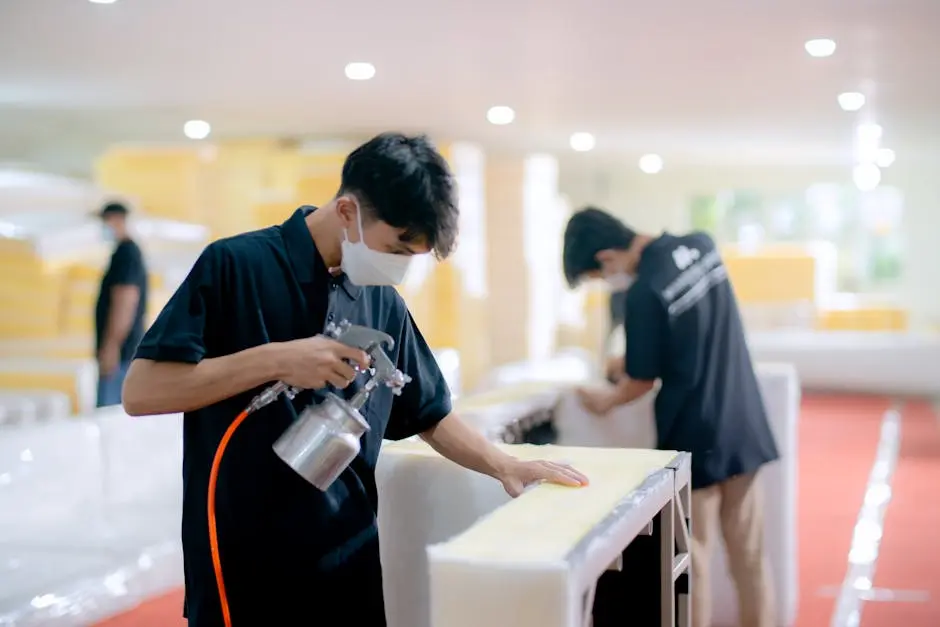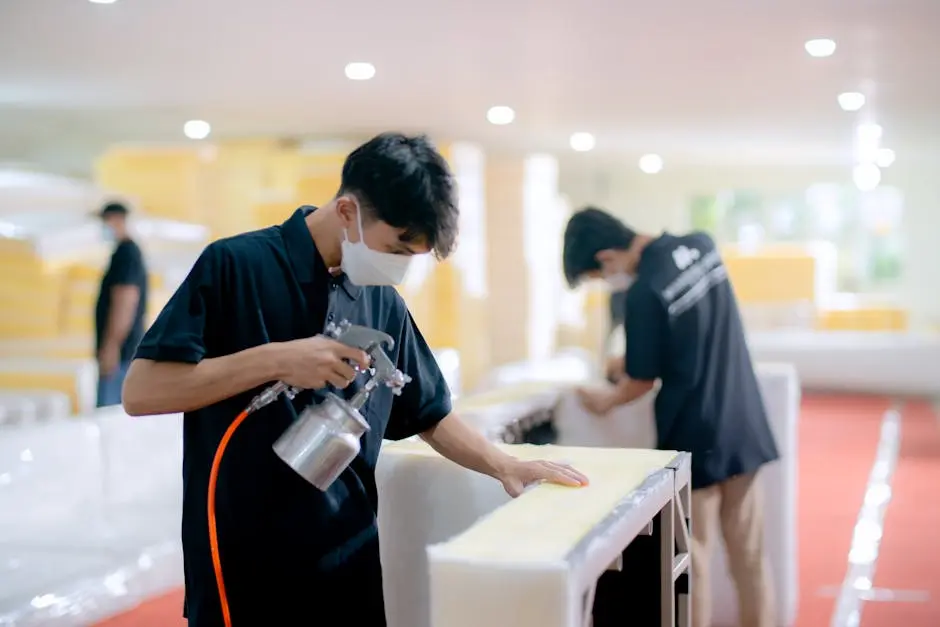Industrial painting has undergone significant advancements with innovative techniques reshaping the industry. Staying updated with these methods can offer improved efficiency, quality, and sustainability.
Understanding the Basics of Industrial Painting
Before diving into the latest techniques, it’s important to understand the fundamentals of industrial painting and the critical role it plays in protecting and enhancing surfaces in various industrial settings.
Industrial painting serves as a vital line of defense against corrosion and environmental wear. By applying paint coatings, surfaces gain a protective barrier that prevents rust and erosion, which can otherwise lead to structural failures. The evolution of paint technology has significantly enhanced the performance of these coatings, making them more durable and resilient.
In addition to protection, industrial painting also offers aesthetic enhancements, transforming ordinary surfaces into visually appealing elements. This dual role of protection and beautification makes industrial painting an indispensable part of manufacturing and construction industries.
Importance of Surface Preparation
Proper surface preparation is critical in achieving successful industrial painting outcomes. Techniques such as sandblasting, chemical cleaning, and power tool cleaning are essential for ensuring paint adhesion and longevity.
Surface preparation serves as the foundation for any successful industrial painting project. Properly prepared surfaces allow for better paint adhesion, which prevents peeling and extends the life of the coating. Methods like sandblasting effectively remove old paint, rust, and contaminants, ensuring that the new paint adheres smoothly.
At ASR California, we employ advanced surface preparation techniques, ensuring every project meets the highest standards of quality and durability. Our expertise in sandblasting, chemical cleaning, and other methods makes us a trusted partner in industrial painting.
Introduction to Automated Painting Systems
The use of automated painting systems is becoming increasingly popular. These systems offer precision, consistent results, and can significantly reduce labor costs while increasing speed and efficiency.
Automated painting systems bring innovation to the forefront by utilizing robotics and computer-controlled sprayers. This technology takes human error out of the equation, delivering a uniformly smooth application that enhances both aesthetic and protective qualities of industrial coatings.
Through automation, companies can boost productivity significantly. Not only does it speed up the painting process, but it also ensures consistent quality across all surfaces. These systems also tackle complex geometries with ease, making them ideal for industries like automotive and aerospace.
Exploring Electrostatic Painting
Electrostatic painting is a modern technique that utilizes electrically charged particles to ensure an even coat, reducing overspray and waste, while providing a high-quality finish.
With applications beyond standard coatings, electrostatic painting is transforming industries through efficient and eco-friendly practices. The charged particles in this method are drawn to opposite charges on surfaces, ensuring even coverage and reduced material usage compared to traditional spraying methods.
Due to its efficiency, electrostatic painting significantly reduces overspray, resulting in minimal wastage of paint. This is not only cost-effective but environmentally friendly, making it a preferred choice for companies aiming to reduce their environmental footprint.
Advancements in Paint Materials
Innovations in paint materials, such as high-performance coatings and environmentally friendly formulations, have become crucial in industrial painting, offering enhanced durability and reduced environmental impact.
Modern industrial paints are designed to withstand harsh conditions while providing additional benefits like UV resistance and anti-corrosive properties. Formulations now include low-VOC (Volatile Organic Compounds) options that ensure safety for both workers and the environment.
High-performance coatings are vital in industries demanding superior protection. From marine to infrastructure settings, these advanced products extend the lifecycle of metal structures by shielding them against the most severe conditions.
The Role of Robotics in Industrial Painting
Robotics in painting allows for precise application, especially in challenging environments. These advancements facilitate increased safety and efficiency.
Robotic painting tools have revolutionized the industry, particularly in areas requiring precise application of coatings. Robotics technology not only enhances the quality of the paint job but also improves the safety of the work environment by handling hazardous tasks.
With the integration of artificial intelligence, robotic systems can adapt to different surface profiles and conditions, further enhancing their applicability in complex industries such as aerospace and automotive manufacturing.
As technology continues to advance, robotics will play an even larger role in industrial painting, pushing the boundaries of what is possible. Embracing these changes is essential for companies looking to stay ahead in a competitive market.
Conclusion on the Latest Industrial Painting Techniques
The evolution in industrial painting techniques not only enhances performance but also aligns with environmental and economic priorities. Embracing these latest techniques can lead to superior results and long-term benefits in industrial applications.


